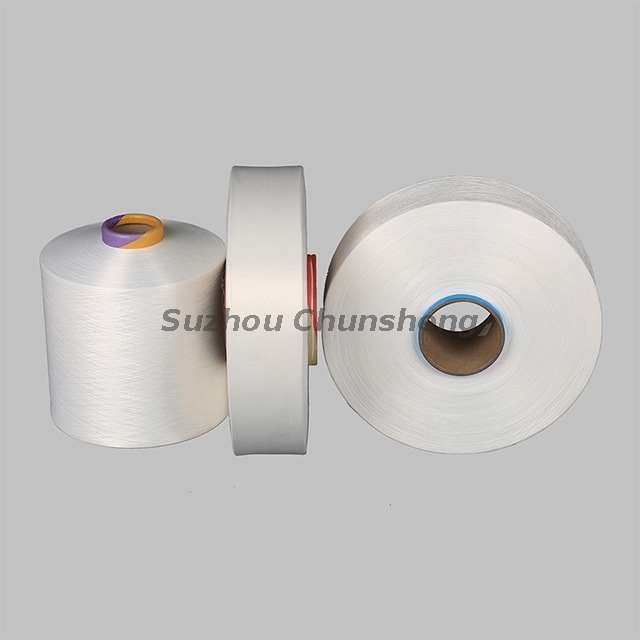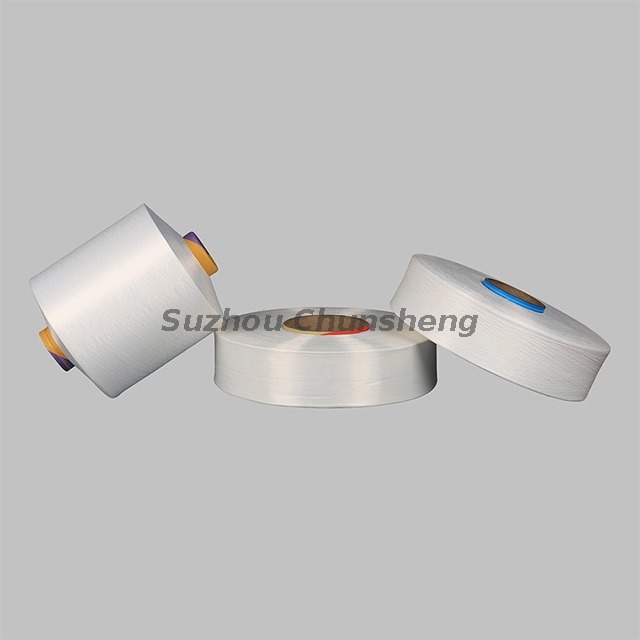T: +86-512-86871686
P: +86-13814898700
P: +86-13814898700
No.639 Yuanxin Road, Taoyuan Town, Wujiang, Suzhou, Jiangsu, China
Views: 175 Author: Site Editor Publish Time: 2025-10-08 Origin: Site
Selecting the right yarn is one of the most critical decisions a weaver makes. The yarn you choose directly affects the texture, durability, drape, and overall character of your finished piece. Whether you are creating wall hangings, scarves, rugs, or decorative fabrics, understanding the nuances of yarn selection can elevate your weaving from functional to truly artistic. Many factors come into play: fiber content, thickness, twist, eco-friendliness, and even how the yarn behaves under tension on the loom. Today, with a growing emphasis on sustainability, eco-friendly yarn options have become central to the discussion, offering weavers the chance to align their craft with environmentally responsible choices. This guide explores practical criteria and actionable insights to help you choose the best yarn for your weaving projects.
In weaving, yarn is not just a raw material; it defines the structure of the fabric itself. Warp yarns form the strong, lengthwise foundation, while weft yarns provide the crosswise texture and design. The strength, elasticity, and weight of the yarn all influence how smoothly the weaving process runs and how well the finished product holds up over time. For example, a tightly twisted cotton makes an excellent warp for a rug, while a soft alpaca might be better suited as weft for a scarf. Choosing eco-friendly yarn also impacts performance—organic cotton tends to have fewer chemical residues, making it gentler on the loom and your hands. Understanding these functional roles ensures your project is not just beautiful but structurally sound.

When evaluating yarn for weaving, it helps to break down the decision into several core criteria. These include fiber type, weight, twist, texture, and availability. Each project has unique requirements, and aligning the yarn’s properties with your intended outcome is the surest way to avoid frustration. For instance, a rug requires durability and strength, while a wall hanging can accommodate more delicate, decorative fibers. Beyond technical performance, weavers today often weigh environmental considerations. Choosing eco-friendly yarn means supporting fibers that are sustainably grown, processed with fewer chemicals, and often sourced from ethical supply chains. Here are some main aspects to assess:
| Factor | Why It Matters | Example Choices |
|---|---|---|
| Fiber Content | Affects strength, softness, and durability | Polyester, polyester yarn, wool, hemp |
| Yarn Weight | Determines thickness and drape | Fingering, DK, bulky |
| Twist | Impacts strength and surface texture | Polyester, polyester yarn, cotton |
| Eco-Friendliness | Reduces environmental footprint | Recycled polyester, organic cotton |
Natural and synthetic fibers offer distinct advantages and limitations in weaving. Natural fibers like cotton, linen, wool, alpaca, hemp, and bamboo are valued for their breathability, comfort, and traditional aesthetic. They are also the foundation of many eco-friendly yarn options since they can be grown and harvested sustainably. Synthetic fibers like acrylic, nylon, and polyester provide durability, elasticity, and affordability but often lack the organic feel of natural fibers. For weavers prioritizing sustainability, natural fibers—especially organic or recycled varieties—are usually preferred. That said, blends of natural and synthetic yarns, such as polyester yarn mixed with natural fibers, can sometimes deliver the best of both worlds: strength, resilience, and reduced cost.
| Fiber Type | Advantages | Considerations |
|---|---|---|
| Cotton (organic) | Strong, smooth, eco-friendly | Can shrink if untreated |
| Wool | Warm, elastic, versatile | May felt or shrink |
| Hemp | Very durable, sustainable crop | Coarse texture |
| Bamboo | Soft, eco-friendly, silky drape | Can pill if low quality |
| Polyester yarn | Durable, affordable, versatile | Made from petroleum, non-biodegradable |

As awareness of environmental impact grows, eco-friendly yarn has become an essential choice for many weavers. These yarns minimize chemical use, conserve resources, and support ethical labor practices. Recycled polyester yarn, made from post-consumer textiles or PET bottles, is an eco-friendly synthetic alternative, providing strength and durability while diverting waste from landfills. Organic cotton, grown without synthetic pesticides, offers a reliable and versatile option for warp and weft. Hemp and linen are highly sustainable due to their low water requirements and natural resistance to pests. Bamboo yarn, when produced through closed-loop processes, provides a soft and luxurious alternative. Choosing eco-friendly yarn not only supports sustainability but also resonates with conscious consumers who value responsible artistry.
Not every yarn suits every weaving project. Choosing the best yarn requires aligning fiber properties with functional demands. Rugs require sturdy warps such as hemp or tightly spun cotton, while scarves benefit from softer fibers like alpaca or bamboo. Polyester yarn can be a good option for projects that require durability and affordability, such as upholstery or activewear. Tapestries and wall hangings allow greater freedom, since they do not endure wear and tear, making it possible to incorporate novelty or textured yarns for visual interest. Eco-friendly yarn fits seamlessly across project types—organic cotton makes reliable warps, while bamboo and hemp enhance both durability and softness in decorative wefts.
| Project Type | Recommended Yarn Choices | Eco-Friendly Options |
|---|---|---|
| Rugs | Strong cotton, linen, hemp | Organic cotton, polyester yarn |
| Scarves/Shawls | Wool, alpaca, bamboo | Bamboo, organic wool |
| Wall Hangings | Blends, textured novelty yarns | Recycled yarns, polyester yarn |
| Towels/Table Linens | Cotton, linen | Organic cotton, linen |
The thickness (weight) and texture of yarn significantly influence weaving results. Light-weight yarns such as fingering or lace are ideal for delicate fabrics, while bulky yarns produce heavier, structured results. Texture also matters—smooth yarns create crisp patterns, while fuzzy or boucle yarns add depth and interest. Eco-friendly yarn is available in all these categories, making it easier to maintain sustainability without sacrificing creative options. For instance, organic cotton comes in multiple weights suitable for everything from towels to blankets, while hemp yarn provides a naturally textured finish for rustic projects. Polyester yarn, with its durability and smooth texture, is great for items that require strength, such as outerwear or upholstery.
The art of weaving often involves balancing beauty with function. A weaver might be drawn to a luxurious silk yarn, but for a high-use item like a dish towel, cotton may be more practical. Similarly, a vibrant synthetic yarn may catch the eye, but if sustainability is a priority, eco-friendly yarn such as bamboo, recycled polyester, or organic cotton may offer a more responsible choice. By evaluating how the yarn will perform in daily use, as well as how it looks and feels, you can make decisions that result in both beautiful and durable pieces. This balance ensures your woven works are not only admired but also appreciated for their utility.
Choosing the best yarn for weaving projects is a thoughtful process that combines technical knowledge, creative vision, and ethical awareness. From understanding fiber types and yarn weights to embracing eco-friendly yarn, including polyester yarn made from recycled materials, each decision shapes the outcome of your craft. By aligning your choices with the functional needs of your project and your values as a maker, you create woven pieces that reflect both artistry and responsibility. As weaving continues to evolve, sustainability and creativity can move hand in hand, ensuring that each piece carries meaning beyond its threads.
Q1: What is the best eco-friendly yarn for beginners in weaving?
Organic cotton is an excellent starting point. It’s easy to work with, strong enough for warp, and widely available in sustainable options.
Q2: Can I use recycled yarn in warp threads?
Yes, but ensure the recycled yarn has sufficient strength and twist. Many recycled cotton blends work well for warps.
Q3: Is bamboo yarn durable enough for weaving projects?
Bamboo yarn is durable for light- to medium-use items like scarves or shawls but may not be ideal for heavy-duty rugs.
Q4: How do I choose between wool and cotton for weaving?
Wool offers elasticity and warmth, while cotton provides strength and crispness. The choice depends on whether you prioritize flexibility or structure.
Q5: Why should I choose eco-friendly yarn over conventional yarn?
Eco-friendly yarn reduces environmental impact, avoids harsh chemicals, and often provides superior comfort and texture, making it both a responsible and rewarding choice.